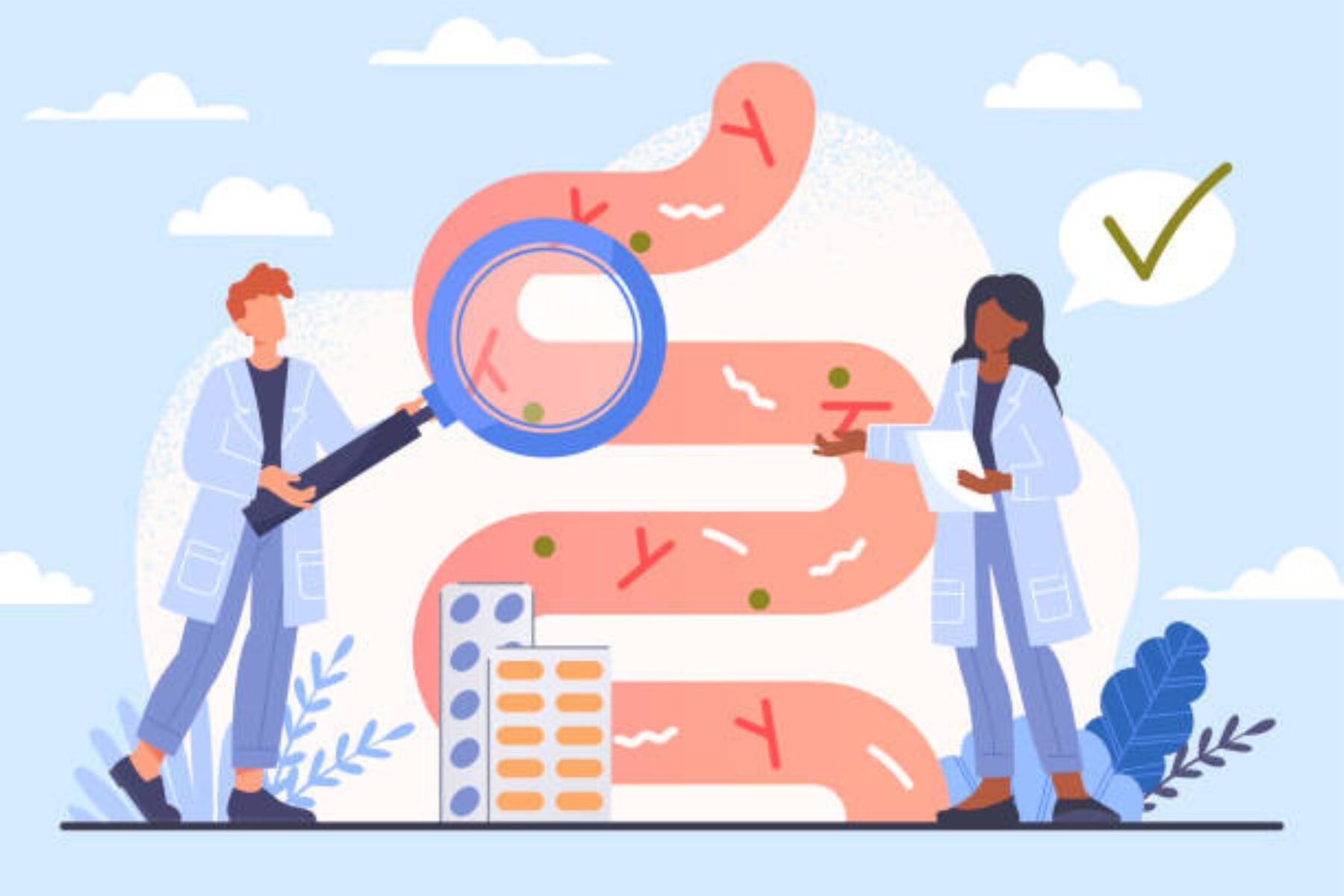The Dietitians Guide to a GI-MAP Test
This post may contain affiliate links
Research continues to link the gut to nearly every facet of our health. Could the GI-MAP be key to understanding our patients’ microbial health?

Understanding the Gut Microbiome
The GI tract is the residence of trillions of microorganisms that include bacteria, archaea, fungi, and viruses. The gut microbiome plays a pivotal role in promoting digestion of food, metabolic function, and regulation of immunological processes. Diet, age, stress, and disease cause increases and decreases in bacterial diversity. Chronic gut dysbiosis (imbalanced gut flora), has been tied to irritable bowel syndrome, diabetes, obesity, cancer, cardiovascular disease, central nervous system disorders, and mental health disorders. For this reason, the GI MAP, offers promising opportunity to help identify gut imbalances.
What is the GI-MAP?

The GI-MAP (Gastrointestinal Microbial Assay Plus) is a DNA-based stool test that uses quantitative PCR technology to analyze microbial imbalances in the gut. Unlike traditional culture-based tests, the GI MAP quantifies the DNA of bacteria, parasites, fungi, and viruses. This test allows for a deeper look into the microbiome to identify the specific microbes present and in what quantity.
It’s often used in functional and integrative medicine settings to help guide treatment for digestive, autoimmune, metabolic, and even neurological conditions. Dietitians are beginning to integrate this testing into their practices as well!
What Does It Test For?
The GI-MAP provides a comprehensive snapshot of:
|
Pathogenic bacteria |
C. Diff, Salmonella, E. Coli |
|
Parasitic pathogens |
protozoa, worms |
|
Fungi/yeast |
Candidia species |
|
Viruses |
Epstein-Barr Virus, CMV |
|
Commensal (normal) bacteria |
both beneficial and opportunistic strains |
|
Inflammatory markers |
Calprotectin, Secretory IgA, anti-gliadin IgA |
|
Digestive markers |
Elactase, Steatocrit, Occult blood |
|
Immune and gut barrier markers |
Zonulin, beta-glucuronidase |
This wide net makes it appealing for practitioners who are looking to assess gut health in the context of complex or chronic conditions, which often includes Dietitians.
Who Would Benefit From Taking the GI-MAP?

The test is typically recommended for individuals experiencing:
- Chronic digestive issues (bloating, diarrhea, constipation, IBS/IBD
- Skin problems (eczema, acne, psoriasis)
- Autoimmune conditions
- Persistent brain fog or fatigue
- Mood disorders like anxiety or depression
- Hormonal imbalances
- Post-antibiotic gut rebuilding
It may also be used proactively by athletes or individuals looking to optimize performance, immune function, or inflammation levels.
How Does It Work?
The GI-MAP has a pretty straight forwards process. Here’s how it works:
- Order the test through a healthcare provider
- Receive the kit in the mail
- Collect your stool sample using the provided tools
- Mail it back to the lab with prepaid shipping
- Receive results in 10-15 business days
The Dietitian’s Role

As dietitians, our role goes beyond food. We’re interpreters of clinical data that can inform nutrition strategies. With the GI-MAP, we can:
- Interpret microbiome imbalances and inflammation markers
- Identify root causes of symptoms (e.g., low SCFA producers, dysbiosis)
- Guide targeted interventions like probiotics, antimicrobials, or dietary changes (e.g., low FODMAP, SIBO protocol, increased plant diversity intake)
Is It Evidence-Based?
The science of stool testing and microbiome interpretation is still evolving. While the qPCR technology is highly sensitivity, clinical guidelines are still limited, and many findings are not yet validated by large-scale RCT studies. The current body of evidence on the GI MAP test is limited as this test is still fairly new.
That said, the test can serve as a clinical roadmap when used alongside symptoms, labs, and clinical judgement– not in isolation.
Bottom Line: Is it Worth Implementing into Your Practice?
The GI MAP isn’t for everyone, but in complex, unresolved cases, it may offer insights that traditional tests miss. For dietitians working in gut health, functional nutrition, or chronic disease management, it’s a powerful tool when used appropriately and ethically.
If your client has persistent gut symptoms or unexplained inflammation AND other routes have been exhausted, the GI-MAP may be part of providing the best care for your patient.





